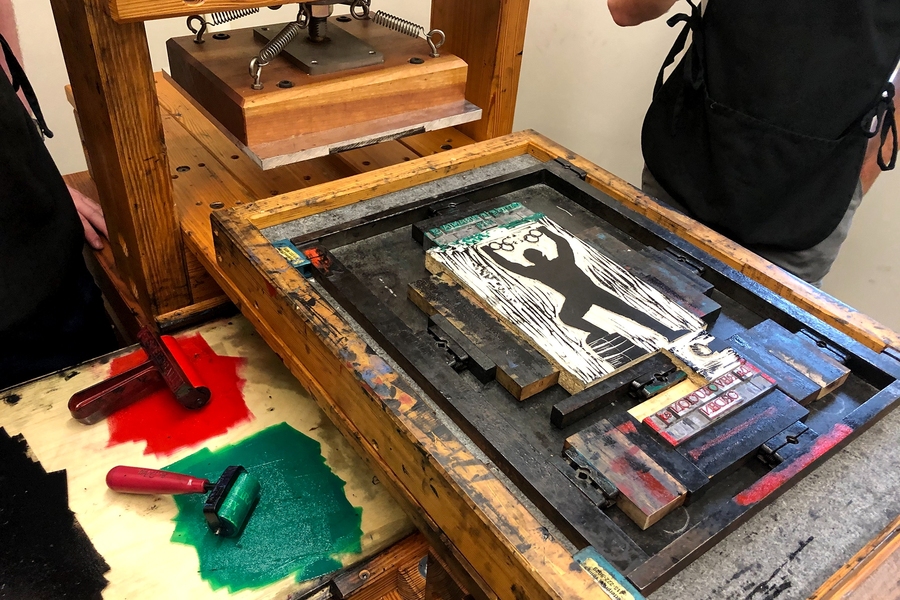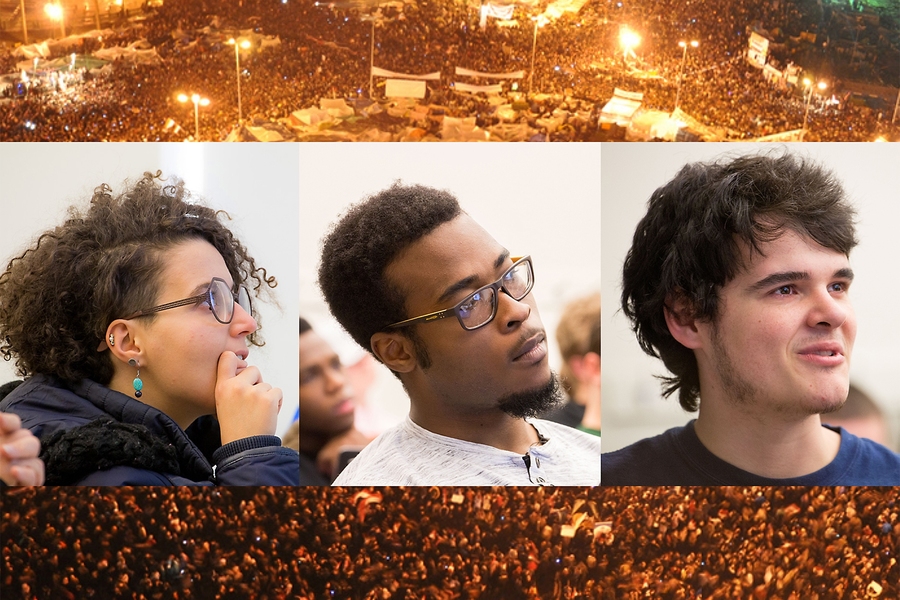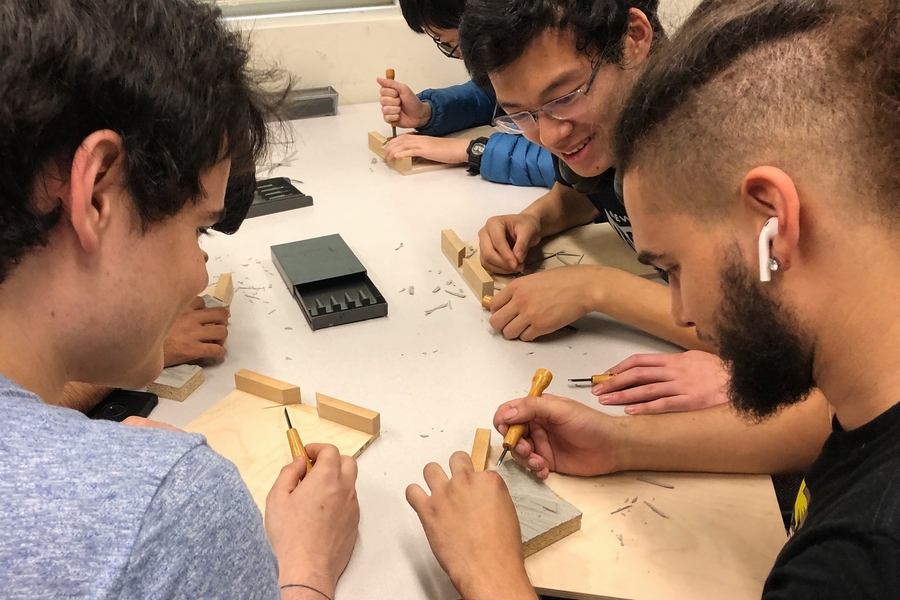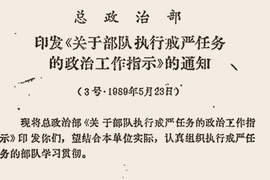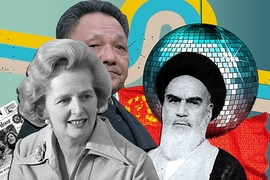Revolutions are monumental social upheavals that can remake whole nations, dismantling — often violently — old paradigms. But the stories of the epic struggles that leave their mark on the world’s history are frequently fragile, precarious, and idiosyncratic in their details, leaving some key questions only partially understood: Why and how do peoples overthrow their governments? Why do some revolutions succeed and others fail?
These are not simple questions, and, for 12 years, MIT students and faculty have set out to answer them in a survey course that spans centuries and continents.
Course 21H.001 (How to Stage a Revolution, or Revolutions for short) is an MIT history class that examines the roots, drivers, and complexities of how governments fall. Co-taught this past fall by three historians — History Section head Professor Jeffrey Ravel, Associate Professor Tanalís Padilla, and Lecturer Pouya Alimagham — the semester is divided into three parts, with each instructor covering, respectively, the French Revolution, the Mexican Revolution, and the Iranian Revolution.
During a mixture of lectures and breakout discussion sessions, students explore the causes, tactics, goals, and significant factors of each revolution, drawing insights from music, film, art, constitutions, declarations, and the writings of revolutionaries themselves.
A wide-angle approach
The topics covered this year span centuries, from the near-mythic French Revolution (1789–99) to the Mexican Revolution (1910-20) to events that have emerged in the students’ own lifetimes, such as the Arab Spring (2010-12). Alimagham brought the semester to a close with a focus on the Iranian Revolution; having students begin their exploration with the roots of American intervention in Iran the latter half of the 20th century, and tracking developments through to today’s western media narrative of the Sunni/Shia conflict.
“Revolutions are a surprisingly good way to learn about a culture,” says Quinn Bowers, a first-year student who took the opportunity to deepen his understanding of history as a parallel to his intended double major in mechanical engineering and aerospace engineering. “Revolutions draw attention to the values the culture holds. This class did a lot to dispel assumptions I didn’t even know I had.”
For another first-year student, Somaia Saba, the offering leapt out at her as she browsed the course catalog to plan her first semester at MIT. With an intended major in computation and cognition (Course 6.9), she was drawn to the class by a fascination with major political transformations, “especially because of the tense political climate in which we are currently living.”
The freedom and exploration in essay-writing was a transformative experience for Saba; essay prompts and writing assignments had never been her favorite aspect of the classroom. But, snagged by a brief mention in class about women’s roles during the Mexican Revolution, she found herself writing extensively on the subject, drawing on her personal attentiveness to women’s issues and roles in history.
“I did not realize the extent to which these issues mattered to me until [seeing the professor’s] comments on my essay.” She also notes that the class has given her ways of thinking and analyzing that allow her to be more engaged with current political events.
Ever-evolving
How to Stage a Revolution is also a chameleon course in that its subject matter fluxes from year to year depending on the expertise of the faculty instructors — a plan that allows a venerable course to cover any number of revolutionary histories. Two years ago, for instance, when Alimagham first taught the course, working alongside MIT historians Caley Horan and Malick Ghachem, the class consisted of modules on the Haitian Revolution, the American Civil War (as America’s second revolution), and the Iranian Revolution.
Not only is the course constantly transforming, Alimagham notes, but its three co-instructors are always adapting as well. “When you’re involved in a team-taught course that includes material in which you are not the primary expert, you evolve as an instructor. It keeps you on your toes.”
Ravel agrees: “One benefit of co-teaching is that we learn from each other. It’s a great conversation among the three of us.”
Ravel currently serves as the head of the MIT History Section, as president of the American Society for Eighteenth-Century Studies, and as a co-director for the Comédie-Française Registers Project, which is producing a collaborative, extensive history of one of France’s iconic theater groups. “Co-teaching reminds me of what it’s like to be a student again,” reflects Padilla. “It makes me more sensitive to how students are taking in information that, for me, is now second nature.”
Padilla is a historian of Latin America and a contributor to numerous publications and volumes surrounding the Mexican Revolution. Her current book project centers on how rural schoolteachers “went from being agents of state consolidation to activists against a government that increasingly abandoned its commitment to social justice.”
The technological contexts of revolutions
Like a number of other humanistic courses at MIT, How to Stage a Revolution is also a hands-on “maker class.” In addition to classroom lectures and discussion sessions, students produce posters on MIT’s Beaver Press, a student-built replica of the wooden, handset printing presses on which the great documents of the Renaissance, the Reformation, and the Scientific Revolution were printed.
Carving linoleum printing plates and inking them by hand, students use their academic understanding of various revolutions to design and produce colorful pro- and counter-revolutionary posters. In one print, the evocative image of a Mexican worker raises the Olympic rings between his hands like chains. In another, the guillotine stands ready with its victims nearby, indicating a mounting death toll, each head labeled respectively with Liberté, Egalité, and Fraternité.
Historic revolutionary narratives have a particular urgency in an MIT classroom: From the dissemination of revolutionary messages via an 18th century printing press to changing fuel technologies to the global social media that shaped the Arab Spring, the technological contexts of revolutions are intrinsic to understanding them.
“Whatever we end up doing in our post-MIT lives and careers will be in the context of complex, real-world problems,” says Bowers. “This class sheds light on some of the world’s most volatile problems.”
